I threw a picnic in our garden the other day. We were busy with all…
The social history of the toilet
Oh one of my favourite topics! I must admit it might appear a bit bizarre to write a blogpost about toilets, but in all honesty: why not? They are part of our lives, a very important part indeed, I would say. Whenever I watch a period drama or walk through a country house, I often ask myself ‘How did they manage back in time if somebody suddenly needed the loo during a ball attended by hundreds of guests…?’ Everything seems to be perfect and everybody is clean and looks extremely elegant in the Jane Austen films and people behave according to the etiquette. But what arrangement did they use and what did they do if they suddenly needed to go to the toilet…? Well, in this post I am trying to find an answer.
Medieval Times and the Tudor Court
The Tudor court had three main ranks of toilet. The royals and nobles used the above mentioned close-stool, courtiers who had their own rooms owned their own chamber pots and finally, servants used the great communal toilet which was capable of seating fourteen (!) people at once, named, Common Jakes, or ‘The Great House of Easment’. Astonishing, isn’t it! It was not an issue to have company in the toilet up until the 18th century I would say. It is impossible to imagine this today. Having said company, until 1700, the monarch himself was constantly accompanied even when relieving himself.

Public toilets were not a solution for the problem in cities. Both in London and Edinburgh chamber pots were emptied at 10pm every day by simply pouring its content out of the window, before a call ‘Gardez l’eau!’ warned pedestrians that a chamber pot was just about to be emptied. One can imagine the conditions in town, the filth people walked in and which they brought into their homes with their shoes.

Early start
Believe it or not, the documented history of the wc (water closet) stretches back to the 16th century when Sir John Harington, the godson of Queen Elizabeth I installed a closet of his own design at his home in readiness for a visit by his godmother.
In the 17th and 18th century, sitting on a commode or close stool containing a pan under the seat was the common solution to the call of nature. The poor were lucky to have a chamber pot which they kept under the bed, hence the name ‘goesunder’. Emptying the chamber pots was usually a servant’s responsibility – well I do not envy them… Obviously the chamber pot was not the best solution, but at least it provided some sort of solution for collecting human excrement. However, in 1665 Samuel Pepys reported in his diary that staying in an inn he was forced to ‘rise and shit in the chimney – twice’, as he did not find any chamber pots. But let’s just have a look at the Tudors first!

Getting more organised. Or not…?
The situation was not much better in the 18th century either. In 1784, a Frenchman, Francois de la Rochfoucault was astonished and disgusted when he saw the English urinating into chamber pots in full view of the dining table in a Suffolk country house. Well… When I noticed the furniture below, I did not have the slightest idea why they wanted to keep a chamber pot in the bottom drawer. I thought they would not pee in front of each other… Well, I was wrong. They did.

The good old privy
Of course there was a fixed sanitary arrangement as well, the privy. I guess all of us have some sort of memory of a privy perhaps in grandma’s garden, a wooden structure with a heart-shaped ‘saw-tooth’ on the door. Privies were common in England, they were located in the corner of a garden or in the furthest end of the ground-floor service wing of a building. Privies had pitched or double-pitched roofs and a door with a ‘saw-tooth’ to provide ventilation. What I find surprising is that even in the 18th century there were privies with two or three holes.

Water or earth?
The first real water flushing toilet was patented by Alexander Cummins (who was a watchmaker by the way) in 1775. He invented the S-bend, the kinked waste pipe which stopped smells from coming back into the room. Three years later Joseph Bramah modified Cummins’ toilet by blocking the smell completely and his version was a commercial success.
But the final water flushing toilet was yet to come. In the overcrowded, rapidly expanding towns the privy was the only sanitary device which in poor districts were often left until they overflowed. ‘Night-men’ emptied cesspits during the night – again not a job to envy or fancy. Some privies were connected to cesspools, some to existing street sewers, which usually drained into the nearest river where people got their drinking water from. One can imagine what vicious circle it was… as a result fish disappeared from the Thames by the 1840s and there were several cholera outbreaks.
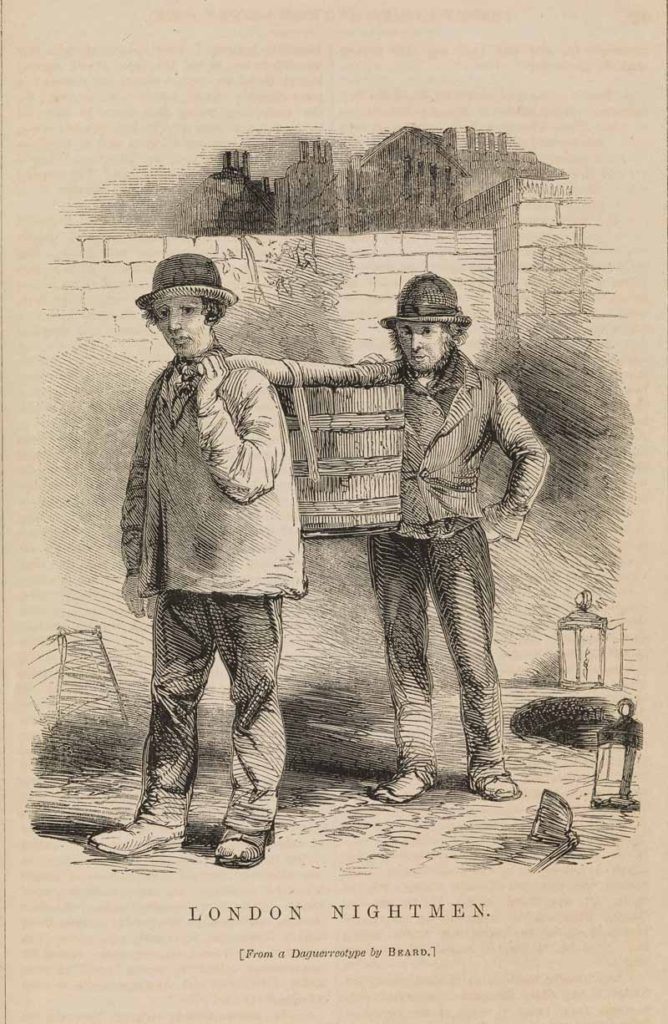
Even the cesspools were not safe, as they were often left unlined, or the brickwork partially fixed with mortar, so that the liquid portion of the sewage could seep away, which resulted in contamination of nearby wells which supplied drinking water to locals. The situation was horrible, not only because of diseases, but also because of the unbearable smell. After the Great Stink of 1858, an engineer, Sir John Bazalgette (who by the way designed the famous Dolphin lamps on the Victoria Embankment in London) suggested building a system which would intercept sewers. This system would carry the sewage to large reservoirs and from there discharged into the Thames. Other towns like Liverpool, Bristol, Portsmouth and Reading followed the example, however, because it was expensive to build sewers under the city’s streets, an alternative solution was demanded.
Such alternative solution was the so called earth-method. Some believed that keeping the human wasted dry and covering it with a dry substance such as earth or ash would break it down and create a rich manure. The debate between supporters of the water carriage system and those who argued for the dry conservancy method lasted for 25 years. Although the dry-method makes sense in a way, it was very difficult to carry out in big cities and towns. Earth had to be delivered to households, it was difficult to separate the urine etc. Instead of using earth, some supporters suggested ash as it was available in every household and was completely free. Those towns which used the dry-method became healthier and the death rate dropped. Yet, the dry-method could not be the ultimate solution as the collection and transportation was expensive. On top of this, the collection was not instant, which meant that it stank. Victorian middle class houses could not afford that.
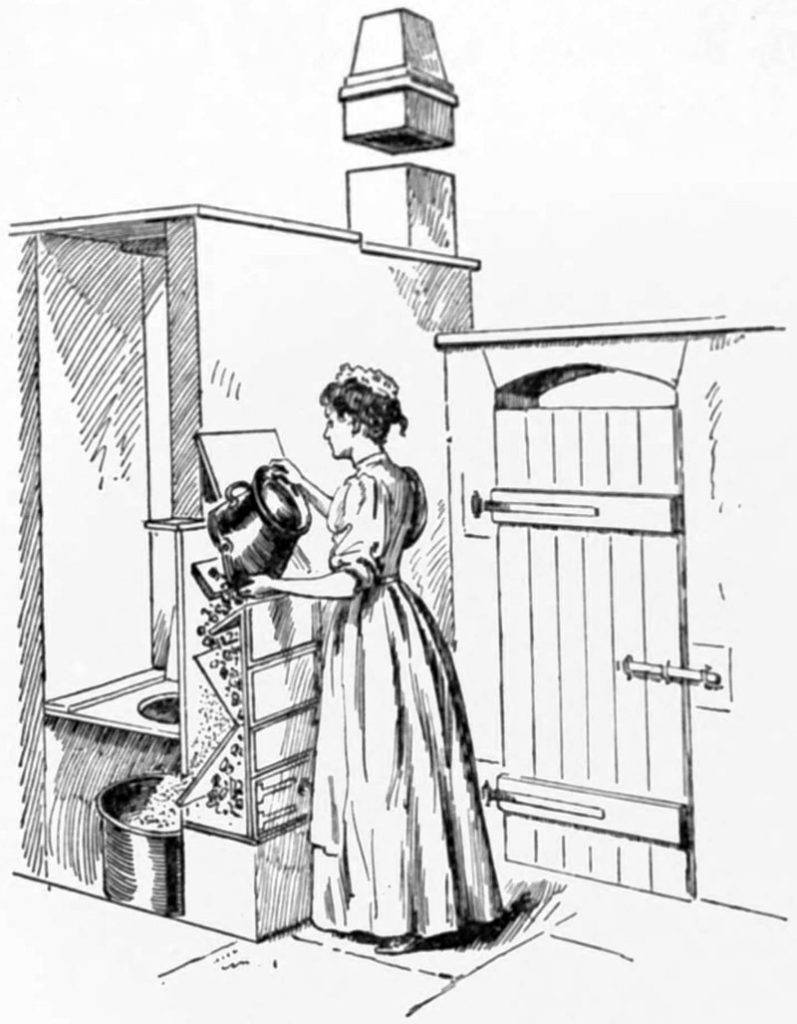
Water wins
It had become clear that the final solution laid with the water closet. Things started to accelerate when Prince Albert died in 1861 with typhoid and 10 years later his son, Bertie, the Prince of Wales, was fighting for his life after he had contracted a disease at Sandringham caused by a faulty drain. Allegedly this was when he said:
If I were not a prince, I would be a plumber.
Civil engineers and manufacturers started to work on the water flushing toilet and this was the time when such big sanitary companies were established like Twyfold, Doulton or Shanks.
What sort of problems were they face with? Well, it was important to have enough water to flush a toilet and this was not available in all households. In poor districts toilets had to be flushed with a bucket of water and in other places the toilet was flushed by the greasy, filthy water from the sink and as the connection between the two was not trapped, the smell from the closet returned to the sink.
Jennings launched the pedestal vase in 1884 and it was often fitted with a lifting seat fixed not to the basin but to wall brackets. In this way, the toilet could be used as urinal by men and a slop sink for the disposal of the waste from chamber pots. Oh yes, chamber pots were still in use! If you remember the episode in ‘You rang, M’lord?’ when Lord Meldrum is adamant to provide Mrs Lipton with a chamber pot when he does not find any in her room upon inspection.
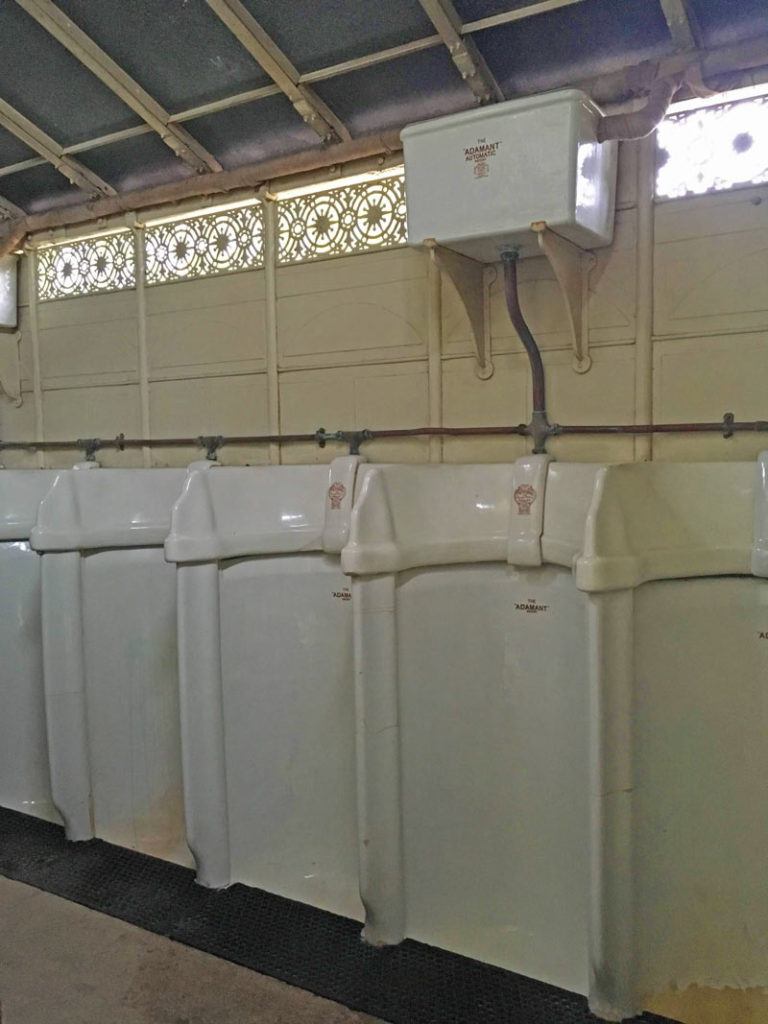
I think, early toilets were as ornate as a piece of artwork. No surprise though as much attention was paid to details and aesthetics during the Victorian and Edwardian era. However, by 1910 the only approved colour for bathroom appliances was white and without ornament. Only art deco brought some changes in the 1920s by cutting the edges of the bathroom furniture to provide different shapes and styles. In the 1930s colours returned and the bakelite was used for seats. Coloured sanitary ware first appeared in the US in 1927, blues, greens and yellows were popular. In the late 1960s and early 1970s new colours appeared: avocado and pampas.
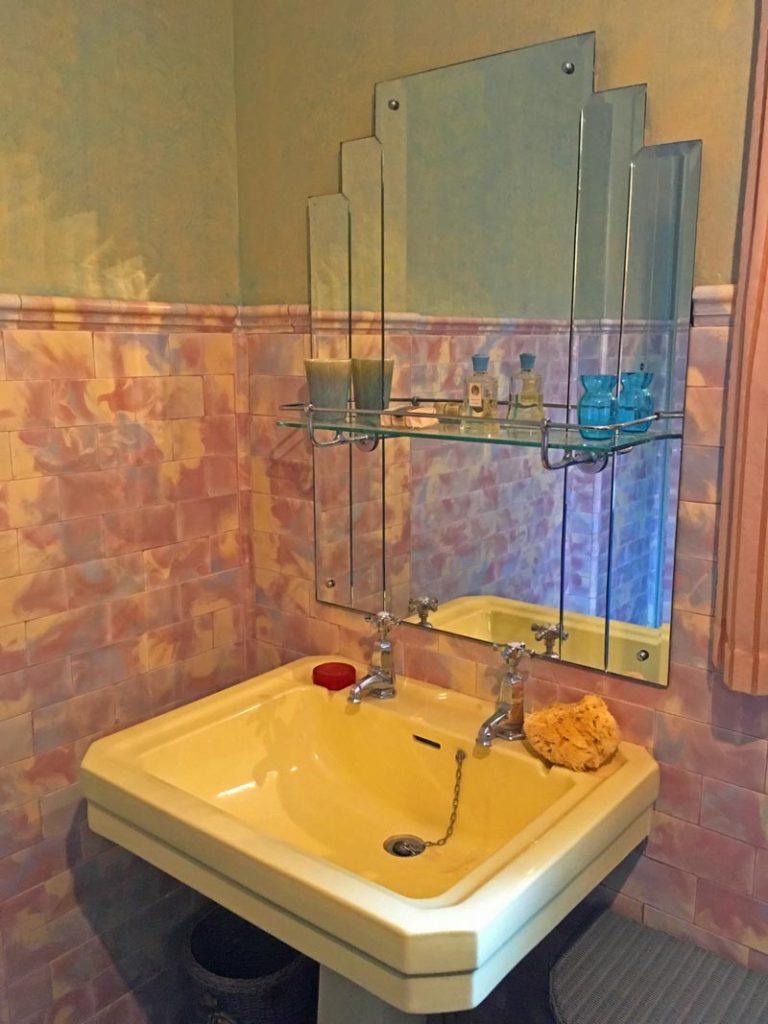
What about urgent needs as a guest?
That is all about the history of the toilet, but what about ladies attending a ball in Jane Austen’s world or later? What would they do if they needed the toilet? Ladies asked their hostesses discretely if they could ‘retire’ for a moment, and would be directed to a spare room, complete with a folding screen and prominently placed china-ware. The question is, how many…? If there was a party of a size of 60 out of which 30 would be ladies… The servants must have been busy emptying them on such an evening and during the night; normally they would remove and clean and replace chamber pots from every bedroom four times a day. Housemaids emptied the chamber pots and cleaned them with hot water and soda. As chamber pots were used often and as a result broke quite often, housekeepers were recommended to keep a larger stock of them.
What about the toilet paper?
Now, as we know what devices people of the past used, the question may come: ‘What about the toilet paper?’
In the middle ages a hand full of straw did the job. Later linen was used for wiping by royalty and aristocracy. These linen cloths were boiled and reused. Paper was out of question as it was too expensive. Purpose made toilet paper first appeared in America in 1857 and it spread to England where the British patent appeared in 1880. Soft tissues were invented in 1936 but were at first marketed as being only for gentlemen’s noses and sold solely at Harrods. Its colour was restricted to white until 1957.
~
Well, I think I am very pleased to live in an era when water flushing toilets are available. I would feel very embarrassed using a chamber pot at a party and leave it behind for servants to clear it…

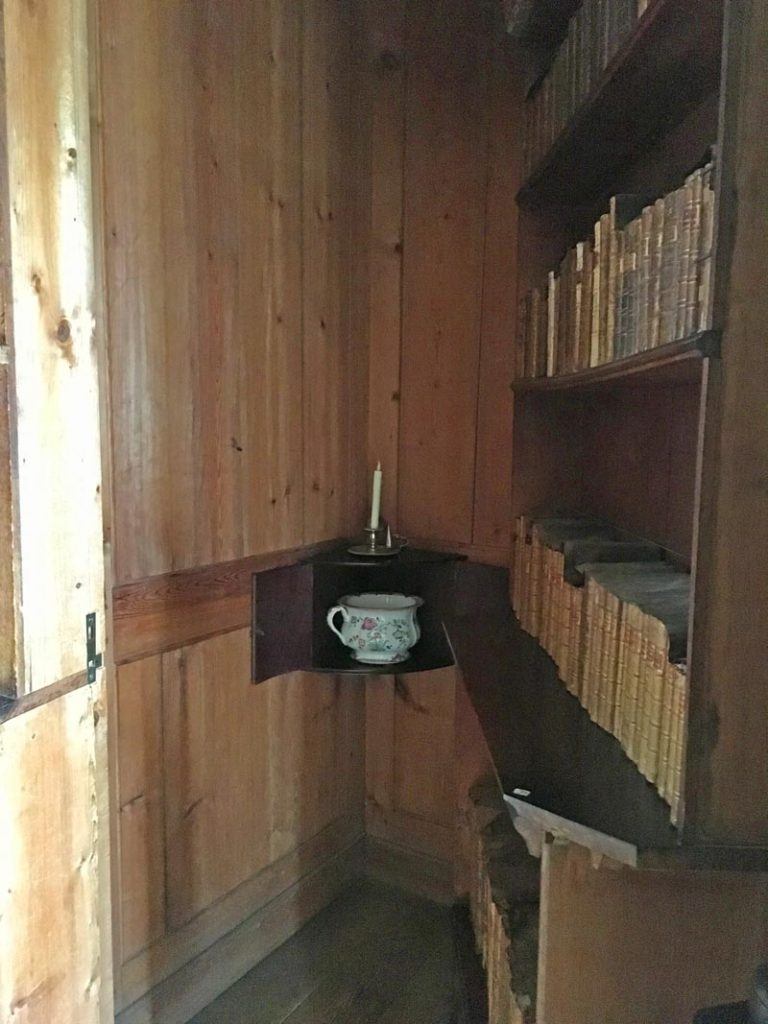
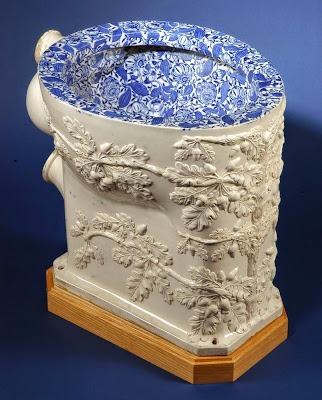
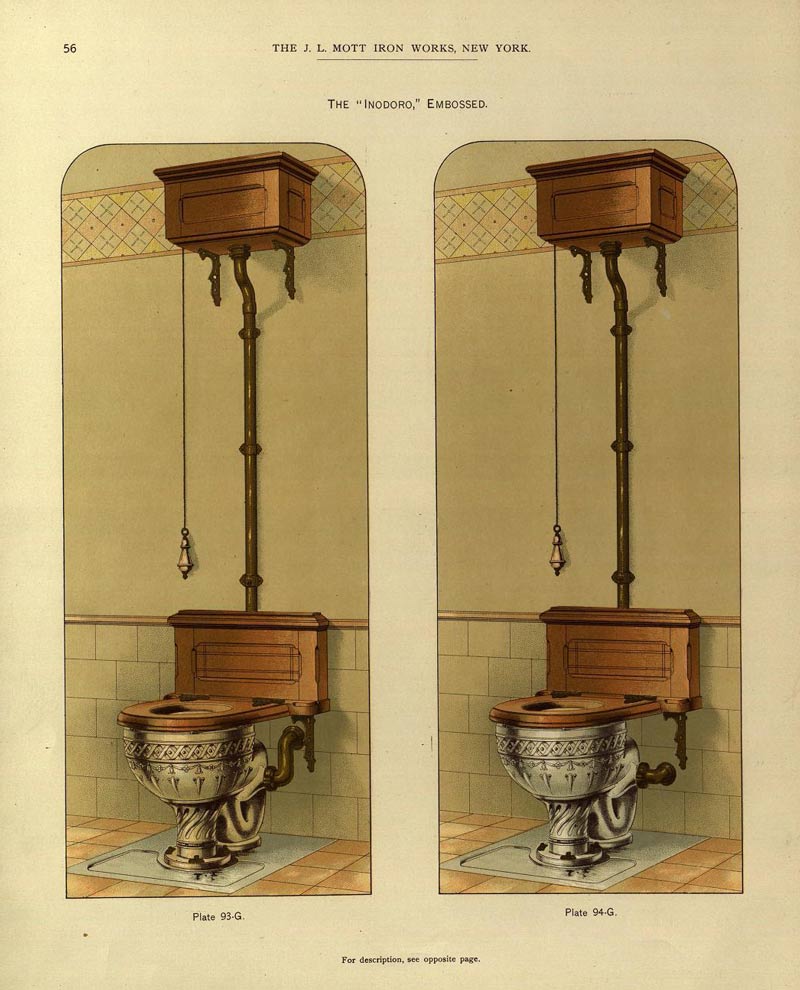
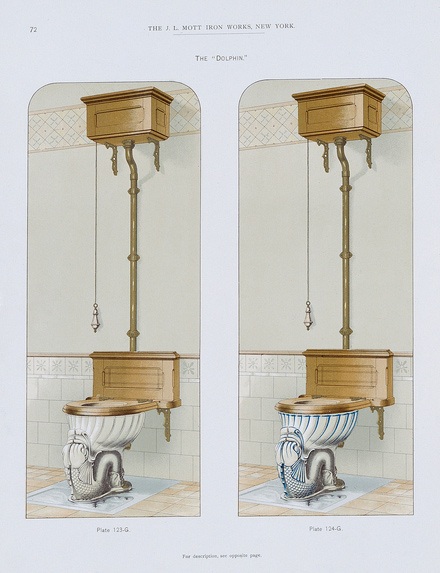



One can’ t help but wonder when watching programs about the past ages
Thanks for all this, just what i was looking for, ,reminding myself that indoor plumbing is a modern luxury.
Only visited Hungary once, I’m afraid, only Budapest, by train – a glorious city. – In a park, one lady encouraged us to learn a little Hungarian, so we tried.
Camping in France, a few years ago, we found that the pitch we had been allocated was right next to the pissoir…
.
I think we would all struggle without this modern luxury… Sometimes simple things are very important even if we don’t realise it. 🙂
And informative and enjoyable article. Cheers!!!
Thank you, Lisa. I’m glad you liked it.
Really interesting! I was curious about this on many levels!
I’m glad you found it interesting. Thank you.
This was such an interesting read, so well researched and written! Who knew I’d be so wrapped up in a blog post about the history of toilets but I couldn’t stop reading and I’m not much of a reader. I’ll definitely be coming back to read more. Thank you
Thank you for the feedback, Ruby. I’m pleased you enjoyed the post.
I just finished reading a book that took place in the mid 1700’s. Then before that a book from the 1860’s. And I thought the same thing. How on earth when the beautiful lavish clothes are explained did they go to the bathroom. And visiting someone, did you bring your own pot???? I adore the romance of period piece novels but boy it must have smelled just awful.